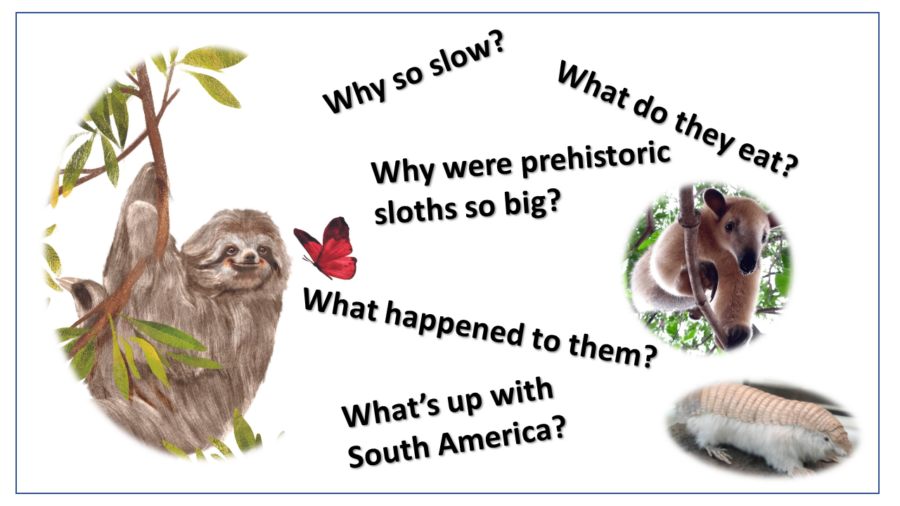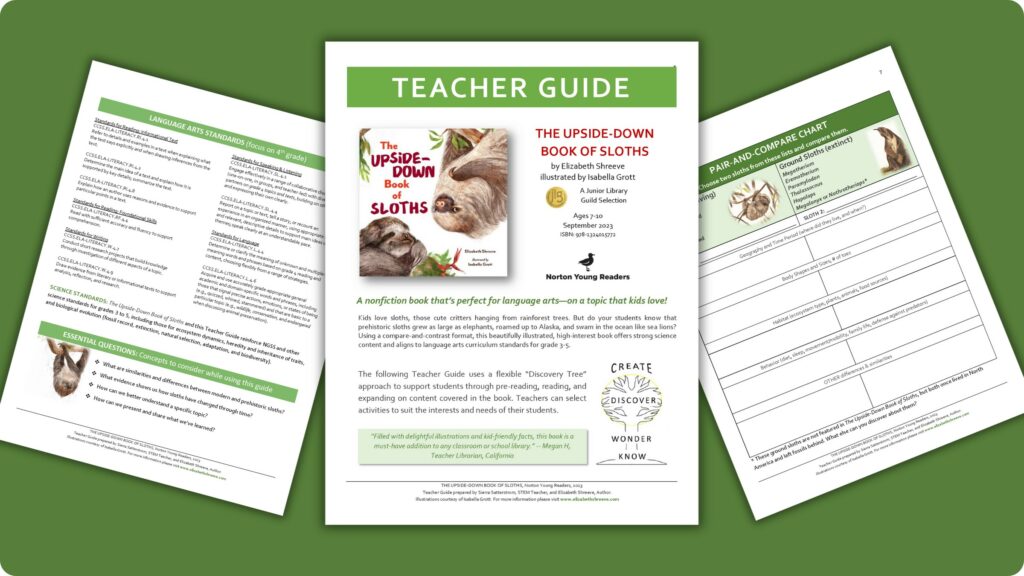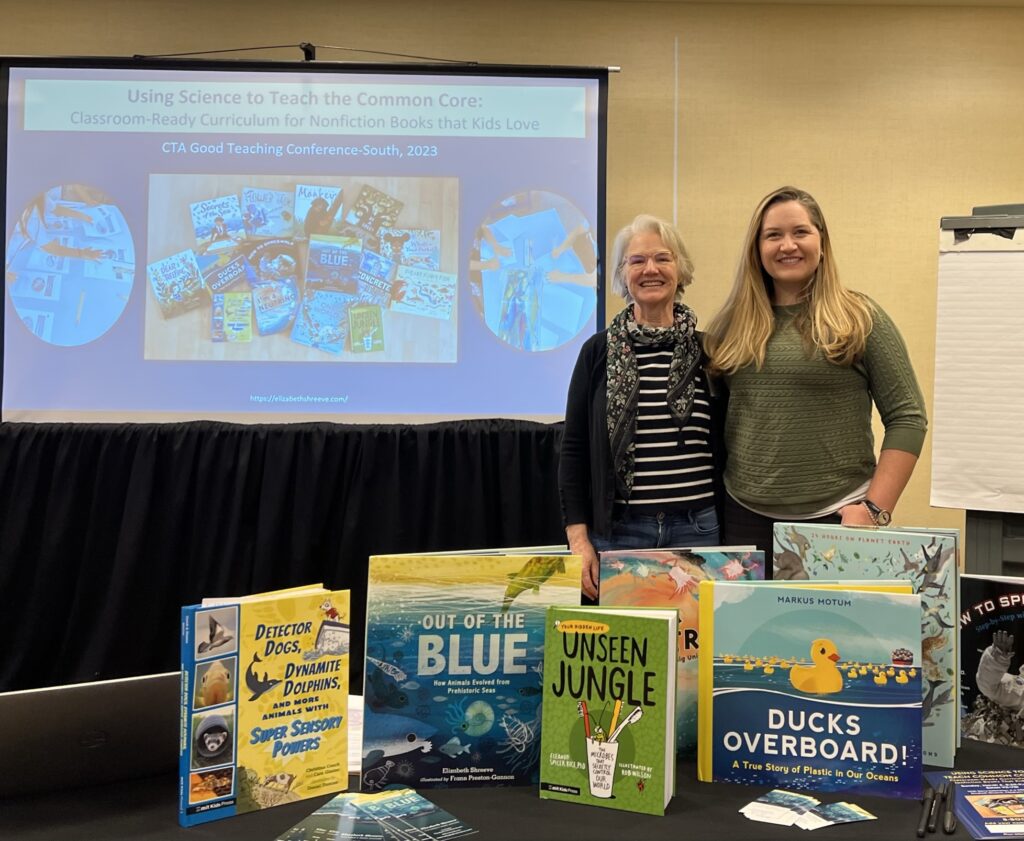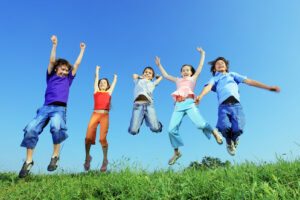GUEST BLOGGER ELIZABETH SHREEVE
Teachers often struggle to find time for science in busy classrooms. Nonfiction books can help—but what’s the best way to use them?
The Teacher Guide for The Upside-Down Book of Sloths offers a flexible, easy-to-use “Discovery Tree” approach for integrating science content into language arts lessons, with direct links to ELA standards. The approach was co-created by author Elizabeth Shreeve and Sierra Satterstrom, STEM teacher at the Conway Academy of Expeditionary Learning, a public elementary school in Escondido, California.
Here are steps for using the Discovery Tree, from pre-reading through reading, sharing, and expanding to new topics. For additional ideas and full-size templates, please refer to the Teacher Guide for The Upside-Down Book of Sloths.
Step 1: Gather books
Assemble a set of nonfiction books for your classroom. For ideas, check the LitLink posts, enlist a librarian, or check out bibliographies at www.elizabethshreeve.com. Choose books based on the interests and needs of your students. Do they love outer space? Are they fascinated by undersea explorations, dinosaurs, or ancient history? Do they gravitate to biographies, graphic formats, expository or browsable books…or do your students have a range of reading styles?
Step 2: Introduce the activity
Provide the Discovery Tree template to students and/or post it at the front of the classroom. Explain the approach and activities.
Step 3: Select books
Invite kids to choose books. They can vote on one book for the class or split into small groups so that multiple books can be shared.
Step 4: “What do I know?”
Create a T-Chart, with a left column labeled “KNOW” and a right column labeled “WONDER.” For each book, ask students what they already know about the topic. Their responses can go onto the Discovery Tree template or onto the left column of the chart. Provide prompts, if needed. For example, prompts for The Upside-Down Book of Sloths might be:
- What do you know about sloths?
- What do you know about fossils?
- What do you know about extinct animals?
Step 5: “What do I wonder?”
For each book, ask students what they would like to know about the topic. Their responses can go onto the Discovery Tree template or onto the right column of the chart. Provide prompts, if needed. (Examples here are summarized from an author visit for The Upside-Down Book of Sloths).


Step 6: “Discover”
Now it’s time to dig into books! While reading, students can:
- Look for answers to their questions. Some answers may be in the book while others require further research using books, YouTube, or online sources.
- Go on a text feature “scavenger hunt.” Have students jot down text features such as titles, subtitles, captions, illustrations, or back matter. (Text features should be explained beforehand; otherwise, provide a reference sheet.) Instruct them to find the text features and prepare to explain how those elements helped them to understand the book.
- Find and look up unfamiliar vocabulary words; create a personal glossary.
- Take a first pass through the book by looking only at illustrations; consider how artwork explains the topic.
- Undertake “jigsaw reading” by dividing into groups that will delve into specific topics covered in the book. Those groups become “experts” that report back to the class.
- Identify the “big idea,” theme, or major questions of the book.
Step 7: “Create”
After reading and activities, students come back together to share their discoveries.
- Bring out the T-Chart for a group discussion of what students knew and wondered at the beginning and what they’ve learned.
- Prepare posters, mini-books, or other graphics inspired by the book.
- Act out a dramatic scene or action from the book.
- Brainstorm a list of related topics. Encourage students in the creative act of asking questions!
- Prepare emails or letter to authors, scientists, or other experts with questions about the book.
For free bibliographies of nonfiction titles and conferences presentations by Elizabeth and Sierra, please click here.
Elizabeth Shreeve (left) writes children’s books that celebrate the origins and diversity of life on Earth. Recent books include The Upside-Down Book of Sloths (Norton Young Readers, 2023, a Junior Library Guild Selection) and the award-winning Out of the Blue: How Animals Evolved from Prehistoric Seas (Candlewick Press, 2021). Upcoming titles include The Oddball Book of Armadillos (Norton Young Readers, 2024) and Dinosaurs to Dragons: The Lore & Science of Mythical Creatures (Simon & Schuster, 2025). Elizabeth lives in northern California with her family, including Hector the PaleoDog. Visit her at https://elizabethshreeve.com/, YouTube: Elizabeth Shreeve Books, and on social media @ShreeveBooks.













Leave a Reply
Your email is safe with me.